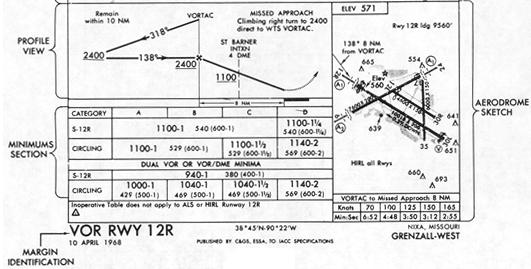

Like VORs, ILSs also use VHF signals to provide course information. Because ILSs are so common, we'll concentrate on them in this article. Who could ask for more than a precise, stabilized, straight-in approach on a three-degree glidepath, ending with a landing on a specially prepared and approved runway? That's what you get with a properly flown ILS or PAR approach. And when you break out of those rotten conditions, there's the greater assurance that the landing runway will be right in the center of your windshield. It's this kind of accuracy that permits descents to altitudes as low as 200 feet agl in visibilities as low as one-half mile. They also give you information on your range from the runway, provide you with target altitudes along the approach path, and keep you well-aligned with the landing runway's extended centerline. First and foremost, precision approaches provide pilots with extremely accurate lateral as well as vertical guidance to relatively long and wide runways.

Why do pilots lean toward precison approaches? Several reasons. The terms slightly and well are used for advisories (e.g., "you're slightly left of course and well above the glideslope.") If pilots on PAR approaches receive no communications for a period longer than five seconds, then they must execute a missed approach. On a PAR approach, controllers constantly issue lateral and vertical commands to keep the pilot on the proper approach path. PARs involve controllers essentially talking pilots down to minimums. Precision approaches are those with vertical guidance, and they include Instrument Landing System (ILS) and Precision Approach Radar (PAR) approach procedures. Instrument pilots generally agree: If ceilings and visibilities are heading downhill, then a letdown through the clag on a precision instrument approach is the only way to fly.


 0 kommentar(er)
0 kommentar(er)
